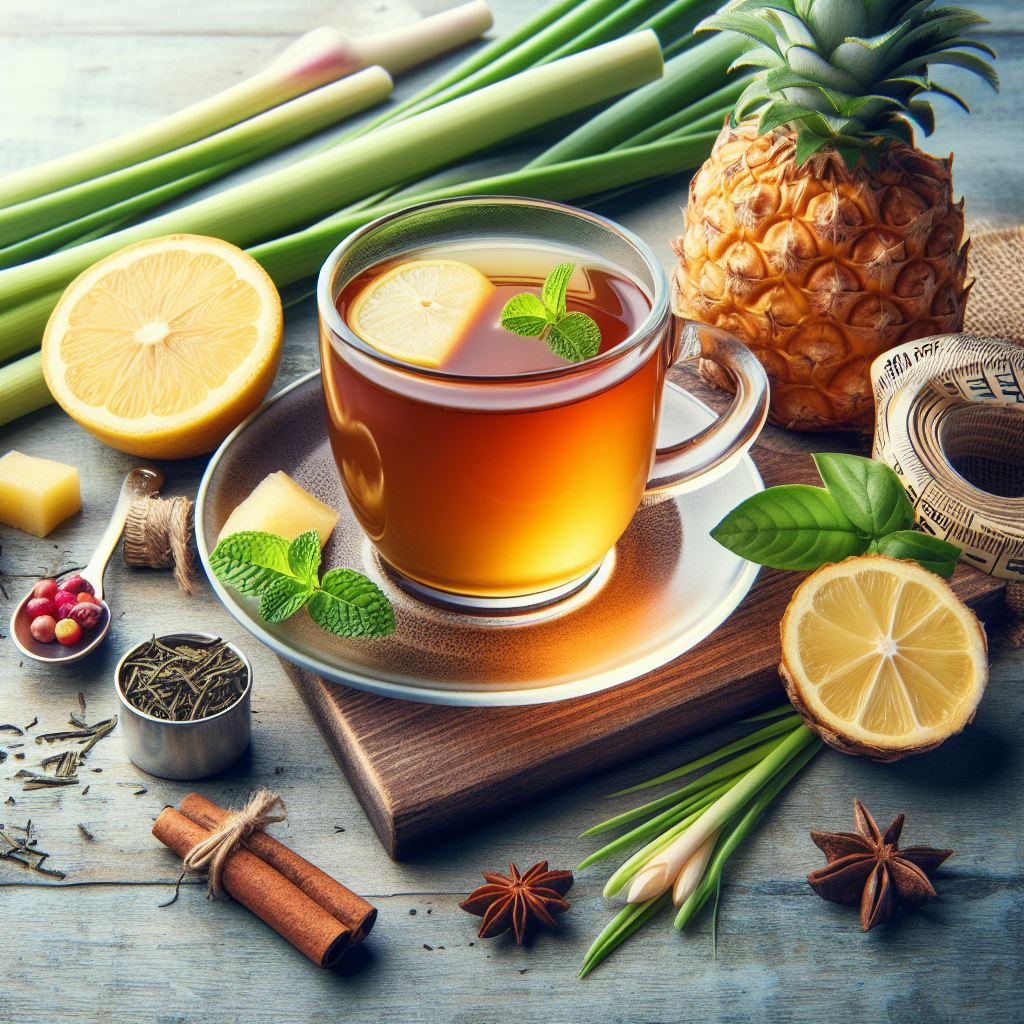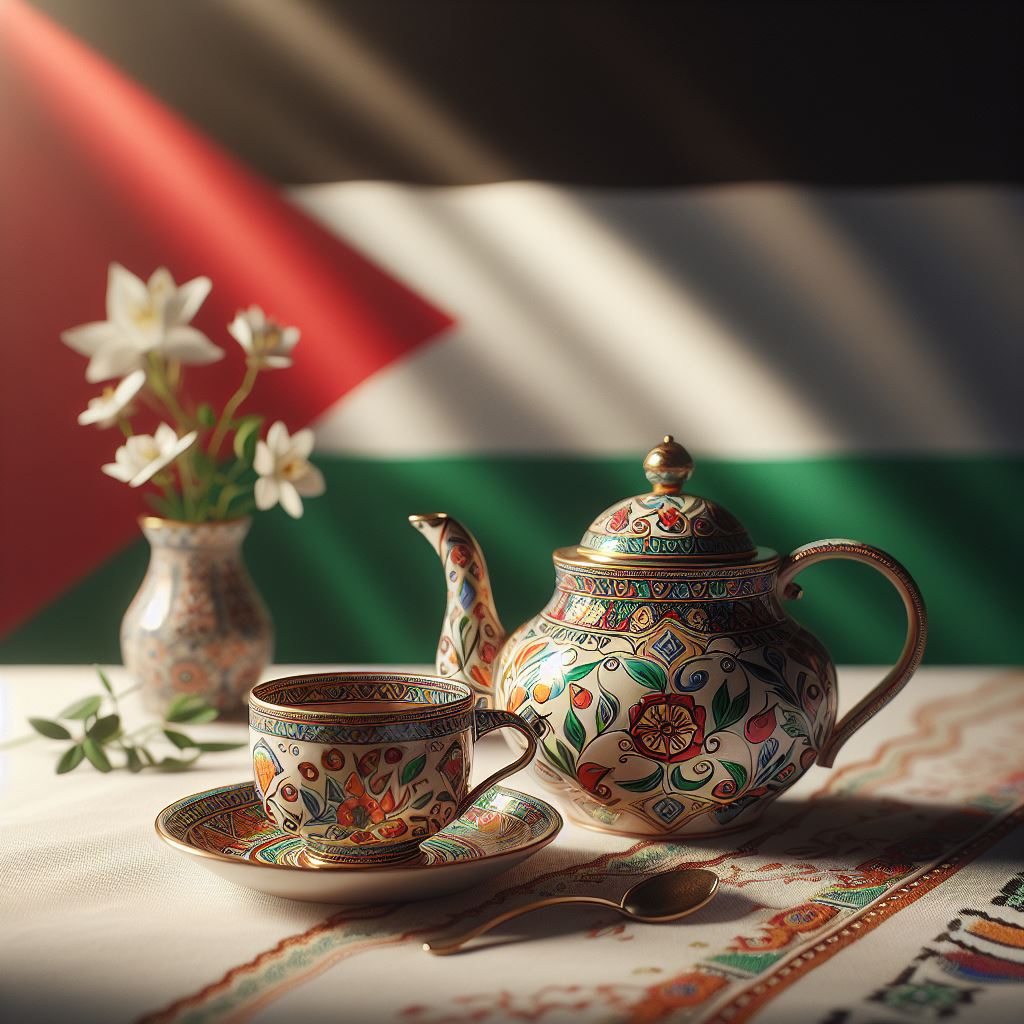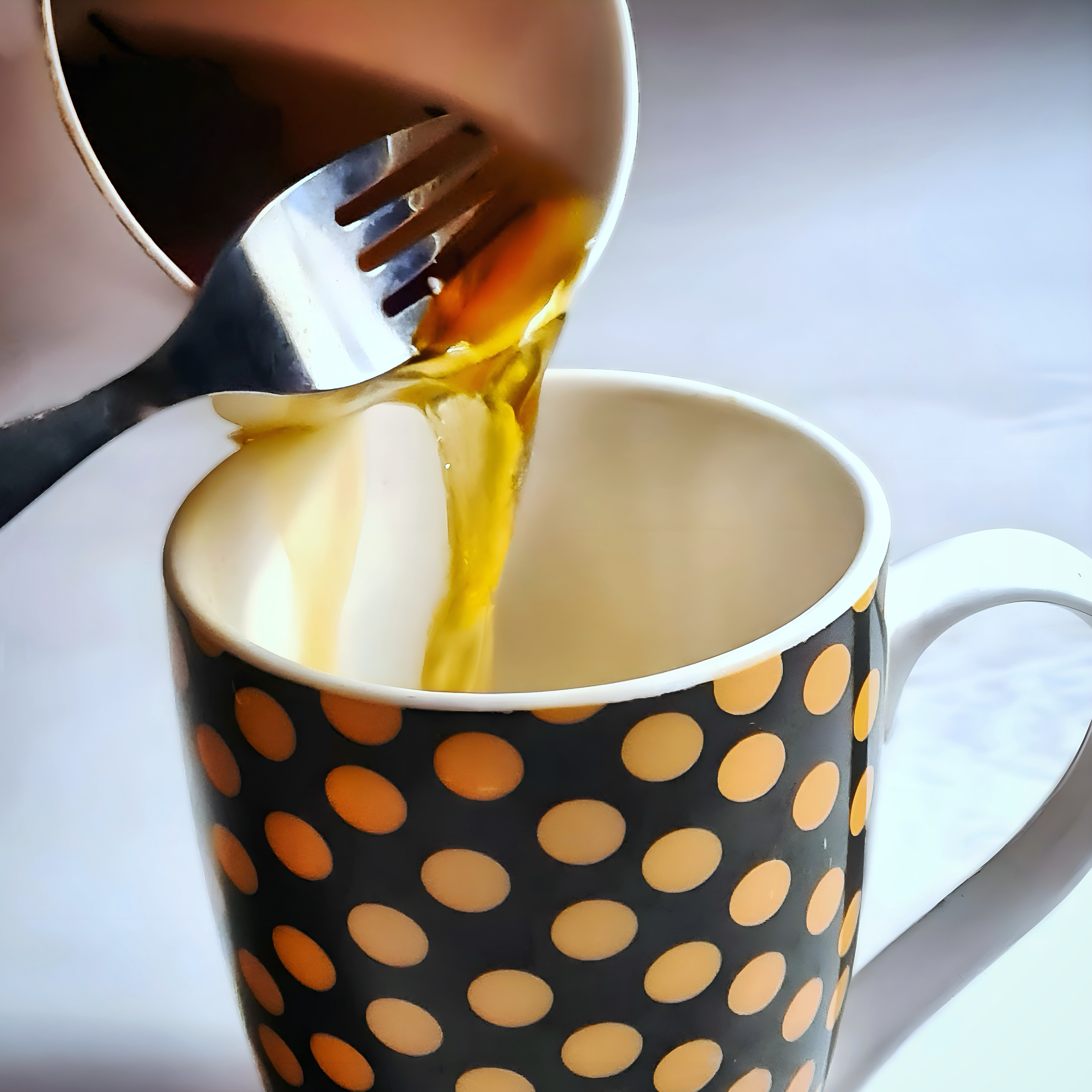Imagine sipping a cup of liquid gold, priced higher than diamonds. Welcome to the world of Da-Hong Pao Tea, the most expensive tea in the world. This tea is not only a rare and exquisite delicacy, but also a treasure trove of history, legends, and culture. In this blog post, we will delve into the captivating history, legendary origins, exquisite flavor profile, cultivation process, and the mystique surrounding this coveted tea!

Da-Hong Pao Tea Legends and Origins
Da-Hong Pao Tea, which literally means “Big Red Robe” in Chinese, has a long and rich history. Its history dates back all the way to the Ming Dynasty in the years between 1368-1644. There are many legends surrounding the origin of this tea, but one of the most popular ones is the tale of the “Red Robe”.
The “Red Robe” Legend
According to this legend, a scholar was on his way to take the imperial examination. This is a crucial test that determined one’s fate and career in ancient China. He was feeling ill and weak, and stopped by a monastery in the Wuyi Mountains, where he was offered a cup of tea by a monk. The tea revived him and gave him the energy and confidence to ace the exam. He was so grateful that he returned to the monastery and gifted his red robe, a symbol of his success and status, to the tea bushes that produced the miraculous tea. The tea bushes then absorbed the essence of the robe, producing the finest and most precious tea in the world.
The “Qianlong Emperor” Legend
Another legend involves the Qianlong Emperor (1711-1799), who was a great patron and connoisseur of tea. He visited the Wuyi Mountains and was impressed by the quality and flavor of the tea he tasted there. Following this, he ordered that the best tea bushes be marked with red cloths, signifying his imperial favor and protection. He also bestowed the name “Da-Hong Pao” to the tea, as a tribute to its excellence and rarity.
The Wuyi Mountains
Da-Hong Pao Tea is closely connected to the Wuyi Mountains. This area is a UNESCO World Heritage Site that is renowned for its natural beauty, biodiversity, and cultural heritage. The Wuyi Mountains are home to the famous “rock teas” – teas that grow on the cliffs of the mountains. The tea plants absorb the minerals and nutrients from the soil and rocks, creating a unique and complex flavor. Da-Hong Pao Tea is the king of the rock teas, and is considered the epitome of the Wuyi tea culture.

Da-hong Pao Culture
Da-Hong Pao Tea is also deeply associated with the Chinese culture and history. Most notably, it was a tribute tea presented to the emperors and nobles as a sign of respect and honor. It was also a symbol of wealth and status, as only the rich and powerful could afford to drink it. The tea was a part of many important ceremonies and rituals, such as weddings, funerals, and celebrations. It was also a source of inspiration and appreciation for many poets, artists, and scholars. These people would often praise its beauty and elegance in their works.
Flavor Profile and Sensory Experience of Da-Hong Pao Tea
Da-Hong Pao Tea is not only a historical and cultural treasure, but also a sensory delight that will enchant your taste buds and your soul. It has a unique aroma, taste, and mouthfeel that will captivate you and make you crave for more.

• The Aroma
The aroma of Da-Hong Pao Tea is rich and complex, with notes of orchid, honey, caramel, and roasted nuts. It is sweet and fragrant, with a hint of smokiness and earthiness. The aroma is so enticing that it will make you want to inhale it deeply and savor it forever.
• The Taste
The taste of Da-Hong Pao Tea is smooth and full-bodied, with a balance of sweetness, bitterness, and acidity. It has a mellow and refreshing flavor, with layers of floral, fruity, and woody nuances. It is smooth and velvety, with a lingering aftertaste that will make you feel satisfied and relaxed.
• The Mouthfeel
The mouthfeel of Da-Hong Pao Tea is thick and creamy, with a sensation of warmth and coziness. It is soothing and comforting, with a feeling of nourishment and vitality. It is like a hug in a cup, that will make you feel happy and calm.
Cultivation Process
Da-Hong Pao Tea is not only a sensory and cultural delight, but also a product of meticulous cultivation and production, requiring skill, patience, and passion. It is a rare and precious tea that is limited in quantity and availability. Mainly because it is made from a specific plant variety, growing only in a small area of the Wuyi Mountains.
1. Plant Variety
The tea plant variety used for Da-Hong Pao Tea is called “Qidan”. Qidan is a sub-variety of the “Wuyi Qi Zhong” or “Wuyi Strange Species”. This particular tea plant is a natural hybrid that was discovered in the wild. It has a unique genetic makeup that gives it its distinctive and unique flavor and quality. The Qidan tea plant is very rare and scarce, as it only grows in a few locations in the Wuyi Mountains, and has a low yield and slow growth rate. The Qidan tea plant is also very sensitive and delicate, requiring ideal growing conditions and careful management.
2. Growing Conditions
The ideal growing conditions are found in the Wuyi Mountains, where the climate is mild and humid. The soil is also rich in minerals, and the environment is pristine and diverse. The Wuyi Mountains provide a unique terroir that influences the flavor and quality of the tea, as the tea plants absorb the essence of the mountains, such as the rocks, the water, the sun, and the air. The Wuyi Mountains also provide a natural protection and isolation for the tea plants. This is because they are surrounded by cliffs and valleys, preventing contamination and interference from the outside world.
3. The Harvesting Process
The harvesting process is a labor-intensive and time-consuming process. It involves hand-picking the tea leaves at the right time and with the right technique. The tea leaves are picked only once a year, usually in late April or early May, when they are at their peak of freshness and quality. The picking is undertaken only in the morning, when the dew is still on them. Moreover, only the young and tender buds and leaves are selected. The tea pickers have to climb the steep and rocky slopes of the mountains, using ropes and ladders. It’s important that they are skilled and experienced, as they have to pick the tea leaves quickly and gently, without damaging or bruising them.

Production Process
The production of Da-Hong Pao Tea is a meticulous and artisanal process. It involves several steps of processing that require precision, expertise, and artistry. The steps include withering, rolling, roasting, and aging, each of which has a significant impact on the flavor and quality of the tea.
The processing is a closely guarded secret, as it is passed down from generation to generation. It is thought that only a few masters know the exact methods and techniques. It is also a creative and artistic process, as each master has his or her own style and preference. Apparently they can adjust the processing according to the tea’s characteristics and the desired outcome. Below is what we know about the production process. If you want to learn more about tea cultivation and processing, check out our article: Tea Processing: The Ultimate Journey from Plant to Cup.
1. Withering

The withering of Da-Hong Pao Tea is the first step of processing. This involves spreading the tea leaves on bamboo trays and exposing them to the sun and air for a few hours. The purpose of withering is to reduce the moisture content and initiate the oxidation of the tea leaves. Ultimately, this will affect the color, aroma, and taste of the tea. The withering of Da-Hong Pao Tea is a delicate and crucial step, as it requires careful monitoring and control of the temperature, humidity, and duration of the withering. The withering of Da-Hong Pao Tea is also a natural and organic step. This is because it relies on the natural elements of the sun and air, rather than artificial heating or ventilation.
2. Rolling

The rolling is the second step of its processing, involving rolling the tea leaves by hand or by machine. This will shape the leaves and break their cell walls. The purpose of rolling is to enhance the oxidation and release the juices and oils of the tea leaves. By doing this, it will affect the flavor, aroma, and appearance of the tea. The rolling of Da-Hong Pao Tea is a skillful and precise step, as it requires the right amount of pressure and speed, and the right shape and size of the tea leaves. The rolling is also a traditional and cultural step, as it reflects the craftsmanship and aesthetics of the tea makers. These specialists can create different shapes and styles of the tea leaves, such as strips, balls, or twists.
3. Roasting

The roasting is the third step of processing, which involves roasting the tea leaves over charcoal fire for several hours. The purpose of roasting is to stop the oxidation and enhance the flavor, aroma, and color of the tea leaves. The roasting of Da-Hong Pao Tea is a complex and delicate step, as it requires careful control of the temperature, time, and intensity of the fire. The roasting is also a creative and artistic step, allowing the tea makers to impart their own signature and styles. This creates different levels of roastiness, sweetness, and smokiness.
4. The Aging

The aging is the fourth and final step of the processing. This involves storing the tea leaves in a cool and dry place for several months or years. The purpose of aging is to mature and mellow the flavor, aroma, and color of the tea leaves, creating a smoother and richer taste. The aging of Da-Hong Pao is a mysterious and magical step, involving natural and spontaneous changes in the leaves. It allows the development of new compounds and the reduction of bitterness and astringency. The aging is also a personal and subjective step, depending on the preference and taste of the tea drinkers. The tea drinker can choose to drink the tea fresh or aged, or even blend different batches of tea to create their own custom flavor.
The World of Auctions and Record-Breaking Prices
Da-Hong Pao Tea is not only a product of meticulous cultivation and production, but also a subject of fascination and admiration in the world of auctions and record-breaking prices. Da-Hong Pao Tea is the most expensive tea in the world, fetching astronomical prices that surpass any other tea or even any other beverage. This special tea is a rare and exclusive tea, as it is limited in quantity and availability. It is also highly sought after by collectors and tea enthusiasts.
The world of Da-Hong Pao Tea auctions is a thrilling and captivating one, where the tea is sold for millions of dollars per kilogram, or even per gram. The tea is auctioned in prestigious and reputable venues, such as the China Guardian Auctions or the Beijing Tea Expo. The bidders are also wealthy and influential individuals, such as businessmen, celebrities, or politicians. This tea tends to be sold in small and exquisite packages, such as silk pouches, porcelain jars, or wooden boxes, adding to the value and appeal of the tea.
Some of the most notable and impressive examples of Da-Hong Pao Tea auctions are:
- In 2002, a batch of Da-Hong Pao Tea from the original and ancient tea bushes was auctioned for the first and last time, as the Chinese government declared the tea bushes a national treasure and prohibited any further harvesting. The tea was sold for 180,000 yuan ($28,000) per 20 grams. This is equivalent to $1,400 per gram, making it the most expensive tea ever sold.
- In 2004, a batch of Da-Hong Pao Tea from the 1950s was auctioned for 1.02 million yuan ($157,000) per kilogram. This is equivalent to $157 per gram, making it the most expensive tea ever sold by weight.
- In 2010, a batch of Da-Hong Pao Tea from the 1980s was auctioned for 208,000 yuan ($32,000) per 20 grams. This is equivalent to $1,600 per gram, making it the most expensive tea ever sold by gram.
- In 2016, a batch of Da-Hong Pao Tea from the 1990s was auctioned for 9.9 million yuan ($1.5 million) per kilogram. This is equivalent to $1,500 per gram, making it the most expensive tea ever sold by kilogram.
The factors that contribute to the high value and price of Da-Hong Pao Tea are:
- Scarcity: Da-Hong Pao Tea is extremely rare and scarce, as it is made from a specific tea plant variety that grows only in a small area of the Wuyi Mountains. Additionally, it has a low yield and slow growth rate. The tea is also limited in availability, as it is harvested only once a year, and only a few batches are produced each year. The tea is also restricted in access, as it is controlled and regulated by the Chinese government. Only a few authorized and certified tea makers can produce and sell it.
- Quality: Da-Hong Pao Tea is of the highest quality and excellence, as it is made from the finest and freshest tea leaves. It is also processed with the utmost skill and care. The tea has a unique and complex flavor, aroma, and color, that is influenced by the natural and organic elements of the Wuyi Mountains. The tea also has a refined and elegant quality, that is enhanced by the traditional and artisanal methods of processing.
- Demand: Da-Hong Pao Tea is highly sought after and desired by collectors and tea enthusiasts. They appreciate and value its rarity, quality, and history. The tea is also a symbol of wealth and status, as only the rich and powerful can afford to buy and drink it. The tea is also a source of pride and honor, as it represents the Chinese culture and heritage, and is often presented as a gift to dignitaries and honorable people.
Can you Buy Da-Hong Pao Tea and Where?
Da-Hong Pao Tea is still very expensive today when sourced from the original tea bushes. However, these bushes have since been cloned, which means it is now available to try today for a much cheaper price. If you would like to try this type of tea, you can buy it from various tea vendors such as Northern Tea, Teasenz, Little Red Cup, and many more. Just don’t expect it to be from the original 3 bushes!

The Experience of Drinking Da-Hong Pao Tea
Da-Hong Pao Tea is not only a subject of fascination and admiration, but also a source of enjoyment and pleasure for those who have the privilege and opportunity to drink it. This is a tea that will delight and enchant you, and make you feel grateful and blessed. It is a tea that will make you experience the true essence and beauty of tea.
To fully savor and appreciate the flavor and quality of Da-Hong Pao Tea, you need to follow some tips on how to properly brew and drink it. Here are some of the tips:
- Use a gaiwan or a small teapot to brew the tea, as it allows you to control the temperature, time, and amount of water and tea leaves.
- Use spring water or filtered water to brew the tea, as it will enhance the flavor and aroma of the tea, and avoid any impurities or chemicals that may affect the taste.
- Use boiling water to brew the tea, as it will extract the full flavor and aroma of the tea leaves, and create a rich and smooth infusion.
- Use about 5 grams of tea leaves for every 100 ml of water, or adjust according to your preference and taste.
- Rinse the tea leaves with boiling water for a few seconds, and discard the water, to wash away any dust or dirt, and to awaken the tea leaves.
- Steep the tea leaves for about 30 seconds for the first infusion, and increase the time by 10 seconds for each subsequent infusion, or adjust according to your preference and taste.
- Pour the tea into small cups, and enjoy the tea with your eyes, nose, and mouth, observing the color, smelling the aroma, and tasting the flavor.
- Drink the tea in multiple infusions, as the tea leaves will reveal different flavors and aromas in each infusion, and allow you to experience the complexity and diversity of the tea.
Conclusion
Da-Hong Pao Tea is the most expensive tea in the world, but it is also much more than that. It is a historical and cultural treasure, a sensory and gustatory delight, a rare and exclusive tea, and a source of enjoyment and pleasure. It is a tea that will captivate and enchant you, and make you fall in love with tea all over again (if you can afford it!).
Discover More Tea-Related Articles
- How to Make the Traditional Tea of Palestine – Shay bil Maramiya
- Top 10 Best British Biscuits for Dunking in Tea
- The Best Non Dairy Milk to Compliment Your Tea
- How to Make Oat Tea with Honey, Cinnamon, and Vanilla
- How to Make Irresistible Apple Cider Tea this Winter





Leave a Comment